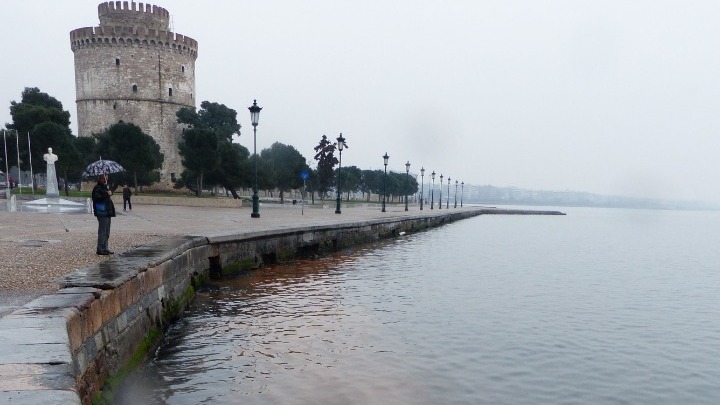'Red tide' in Thermaikos Gulf is back and may be recurring, scientist says

The 'red tide' has once again made its appearance in the waters of Thermaikos Gulf in Thessaloniki and, according to scientists, it is likely to be a recurring phenomenon. The emergency clean-up of the Thermaikos Gulf conducted over the weekend had a very positive impact, however, and helped to mitigate the problems to some extent, Professor of Biology Maria Moustaka, of the Aristotle University of Thessaloniki, told the Athens-Macedonian News Agency (ANA) on Monday.
"The cleaning of the surface water helped because within the slimy mass lay 'hidden' the dinoflagellate Ostreopsis, which is potentially toxic and has created respiratory problems in some areas of Italy where it has bloomed," Moustaka noted.
She explained that the bloom that gives the waters a brownish tone is not the direct result of the unseasonally high temperature but the impact that these high temperatures have on the movement of the waters, noting that it is a complex and eutrophic system that is monitored by the scientists. "Our prediction is that as long as the reasons that provoke the red tide exist, the phenomenon will appear again and again," she said.
Red tides are caused by an explosive growth and accumulation of certain microscopic algae, predominantly dinoflagellates, in coastal waters.
These rust-coloured algal blooms made up of phytoplankton and protozoans can form dense, visible patches near the water's surface.
The ride tide usually appears twice a year in Thermaikos, every spring and every autumn, and lasts a couple of weeks. Along with an unpleasant odour, it affects the primary sector due to its harmful impact on fisheries.

